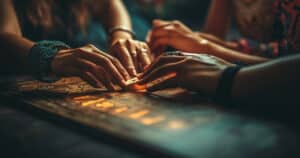
Talking all about Ouija Boards
Talking boards have fascinated people for years. A Ouija board, often called a spirit board, features letters, numbers, and words like “yes,” “no,” “hello,” and “goodbye.” People place their fingers on a planchette. This small piece moves over the board, claiming to show messages from the spirit world. Now, the term “Ouija” is a brand owned by Parker Brothers. However, it is frequently used to refer to any type of talking board.
What Is A Ouija Board?
A Ouija board is a flat, wooden board or other smooth surface with letters and numbers printed on it. It is used to communicate with spirits or other unseen entities via placing your fingers on a planchette, which spirits supposedly use to spell out messages. How they work is open to debate, and their safety is questionable.
The Mysterious Origins of Ouija Boards
The Ouija board has a long and interesting history that goes back to ancient times and different parts of the world. One of the first mentions of a similar way to communicate comes from China during the Song dynasty, around 1100 AD. This method, called fuji or “planchette writing,” also used a moving pointer to reach out to spirits.
In the 1800s, the spiritualism movement in the United States grew. During this time, people wanted new ways to talk to the dead. Boards that worked like the Ouija board became popular. After the Civil War, many believed these boards could help them connect with their lost loved ones. This led to a bigger interest in spirit communication and helped the Ouija board become well-known.
What does Ouija mean anyway?
Ouija is a mix of words. It combines ‘Oui’ from French and ‘Ja’ from German. Both mean ‘yes.’ The term was created by Charles Kennard and Elijah Bond in the 1890s. Ouija boards get attention because they seem mystical and relate to talking with spirits. The name gives a special mystery to this talking board game. It has caught the interest of many people over time.
Never Miss A Paranormal Story!
Newsletter subscribers get insider access to the latest paranormal posts!
Your email is safe with us and you can unsubscribe at any time!
Unveiling the Birth of Ouija in the Spiritualism Movement
The spiritualism movement grew in the mid-19th century. This growth helped make the Ouija board very popular. Spiritualists thought they could talk to the dead. The Ouija board became a useful tool for this. It could spell out messages, so many people used it to connect with spirits.
Pearl Curran was an important figure in Ouija history. She said she contacted a spirit named Patience Worth using a Ouija board. Over 20 years, she created many poems, novels, and plays inspired by Worth. Her stories caught the public’s attention. The Ouija board became essential for séances and spiritual gatherings in the early 20th century.
The Ouija board became a core part of spiritualism. It provided a way to connect with the spirit world. Many were fascinated by stories of communicating with spirits. The board captured the imagination of people, highlighting its role in exploring the unknown.
The Patenting Puzzle: Who Really Invented the Ouija Board?
While we may never fully know where the Ouija board came from, we do understand its path to being sold. Businessman Elijah Bond is known for getting the first patent for the Ouija board, but his story isn’t a simple one.
At first, the local patent office in Baltimore turned down Bond’s application. He didn’t give up, though. Together with his sister-in-law, Helen Peters Nosworthy, a spiritualist, he took the board to Washington D.C. to get help. Legend says they proved its worth when it spelled out the Chief Patent Officer’s name during their demonstration.
Thanks to their efforts, they received the patent in 1891. This is when the Kennard Novelty Company started making the talking board as a fun game. The Ouija board quickly became popular and has since become a part of American culture.
The Evolution of Ouija Boards Through the Ages
Since the beginning, the Ouija board has changed from a tool for spiritualists to a fun game. Now, it is an icon seen in many horror films. This simple board, with its letters, numbers, and planchette, has made an impact on our culture.
The Ouija board is now a common part of Halloween parties and scary campfire tales. It captivates people, making them curious about the unknown. Many have tried it during sleepovers, adding to its spooky reputation across generations.
From Parlor Games to Paranormal: The Transformation
In the late 1800s and early 1900s, the Ouija board became more than a magical tool. It became a popular game that families loved to play. In many homes in New York, people would gather around the board during their free time. They were curious and excited to feel its mystical vibe.
The Ouija board caught on because it offered a fun way to talk with the unknown. It turned parties and get-togethers into thrilling times, especially on Halloween. People enjoyed mixing a little fear with fun during the spooky celebrations. What was once just for spiritualists became a chance for everyone to join in and share exciting moments.
With this rise in popularity, the Ouija board changed how people looked at it. It became a well-known part of culture, enjoyed widely at gatherings and Halloween parties.
Key Milestones in Ouija Board History
The Ouija board’s historical timeline highlights its evolution, from its invention to its current status as a spooky icon and Hasbro game.
| Year | Event |
| 1890 | Charles Kennard develops the talking board concept, allegedly receiving the name “Ouija” during a session. |
| 1891 | Elijah Bond, Kennard’s business partner, patents the Ouija board. |
| 1901 | William Fuld, an employee of Kennard, takes over the talking board production, renaming it “Ouija”. |
| 1966 | Parker Brothers acquires the rights to the Ouija Board game. |
| 1991 | Parker Brothers is acquired by Hasbro, making Hasbro the current owner of the Ouija board trademark. |
From those early patents to mainstream production and its association with Hasbro, the Ouija board has remained a fixture in popular culture, continuously capturing the imagination and perpetuating its eerie legacy.
Understanding the Ouija Board
The Ouija board often appears in scary stories and is seen as a way to connect with evil spirits. However, it is actually quite simple. It is just a flat board that has the alphabet, numbers from 0 to 9, and the words “yes,” “no,” “hello,” and “goodbye.” Some boards may have special designs or decorations.
The most interesting part is the planchette. This small heart-shaped tool is what users touch when they ask questions. When the planchette moves, it seems to spell out messages by pointing to letters and numbers on the board.
The Components and Design of a Traditional Ouija Board
A Ouija board has a simple design. It is usually made from wood or cardboard. The board is smooth, so the planchette can move easily. The most noticeable part is the alphabet, which is shown in two curved rows. This helps in spelling out messages from the spirit world.
The design also includes numbers from 0 to 9 below the alphabet. This allows users to get numerical answers. A board game made for talking to spirits also needs the words “yes,” “no,” “hello,” and “goodbye.” These words make it easy to understand the answers received.
The planchette is a small piece, often heart-shaped, and is usually made of wood or plastic. It has a clear window in the middle. Users place their fingers on the planchette, letting it slide across the board smoothly for communication.
How Ouija Boards Are Used for Communication
The Ouija board is interesting because it can connect us to the spirit world. To start using the board, two or more people sit around it and gently place their fingers on the planchette. It’s very important to be respectful and careful when using the Ouija board.
When everyone is ready, one person usually takes the role of the speaker and asks questions out loud. The questions can be simple yes-or-no ones or more detailed questions about what happened in the past, what is happening now, or what might happen in the future. There are many types of questions you can ask, but it is best to avoid asking about death or trying to see the future.
As the speaker poses their questions, the group keeps a gentle touch on the planchette, letting it move freely on the board. People believe that the spirits help move the planchette to spell out words or phrases in answer to the questions.
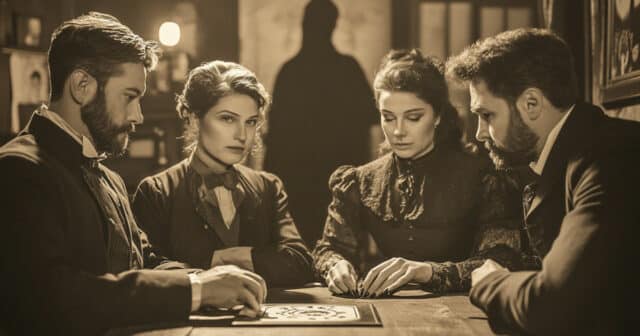
How Do Ouija Boards Work?
While some people believe in the mysterious powers of Ouija boards, scientists explain this with the ideomotor effect. This effect shows that our bodies can move without us knowing it, based on small signals and what we expect to happen.
Simply put, the ideomotor effect means our thoughts and feelings can affect what we do, even if we are not aware of it. This can include small muscle movements that happen without us realizing. It is possible for us to think we are not moving the planchette while our minds are actually making those tiny, unintentional moves.
Psychological Explanations for the Ouija Phenomenon
The ideomotor effect has been studied by scientists since the 1800s. One of the first known tests on this was by Michael Faraday in 1853. He conducted his research at the Royal Institution of Great Britain. Faraday focused on table-turning, a popular practice in spiritualism. He found that movements were caused by the small, unconscious muscle movements of the people involved, not by any spirits.
When using Ouija boards, the ideomotor effect is important. Participants often don’t realize how much they influence the planchette’s movements. Their thoughts and suggestions can shape where it moves on the board. The board helps our unconscious minds show what we think and feel, even if we are not fully aware of it.
The impact of the unconscious mind, along with the social atmosphere during a Ouija session, can make it a strong and sometimes spooky experience. This can lead people to think they are experiencing something supernatural.
Debunking Myths: The Ideomotor Effect
Despite what many believe about the Ouija board, science shows it is the ideomotor effect that makes it move. This effect happens when our minds secretly control our muscles based on small hints, thoughts, or expectations. We may not even know we are doing it.
You can see this effect in action with a simple Ouija board experiment. Have the participants close their eyes or wear blindfolds. While one person asks questions, everyone should lightly touch the planchette. Since they cannot see the board, any movement will suggest it is their unknowingly muscles making it move, not any spirits.
For the next part, you can turn off the lights or use changing light to create shadows. This makes it harder to see where the planchette is going. Ask the participants if they feel like they are pushing it. Most will say no, showing that they truly believe they are not controlling its movements. This experiment shows how the ideomotor effect works quietly in our minds.
Channeling spirits
Channeling spirits using an Ouija board means that people lightly touch a planchette. The planchette is heart-shaped and moves on the board to spell out messages. Many believe this opens a link to the spirit world, which allows spirits to talk to those who are alive. The motion of the planchette is often caused by the ideomotor effect. This effect happens when participants make small, unknowing movements. To communicate with spirits well, it’s important to be patient and be in a quiet place.
Cultural Impact and Notable Stories
Since it was first made over a hundred years ago, the Ouija board has become more than just a game. It is now part of our culture, inspiring many books, films, and art. The board is famous for being mysterious and is often linked to the unknown and the paranormal.
People are still drawn to Ouija boards because of our natural curiosity and fear. We want to know more about what we can’t see. From spooky stories of talking to spirits to exciting horror films, the Ouija board keeps holding our attention. It reminds us that some mysteries are better left alone.
Iconic Ouija Board Moments in Popular Culture
The Ouija board has a strong hold on popular culture. It appears in scary movies and bestselling books. This board, with its strange glow and planchette, is tied to the spooky and supernatural. A famous example is in the 1973 film, “The Exorcist.” In this story, a young girl plays with a Ouija board, and it leads to frightening events.
Many books on the New York Times bestseller list use Ouija boards in their plots. These stories often show the board opening a door to another world or waking hidden supernatural powers. They dive into ideas like talking to spirits, possessions, and the risks of exploring the unknown, creating suspense that grabs readers’ attention.
The Ouija board is unique. It captures people’s thoughts in a way that few other games do. Its mix of fascination and fear helps it stay a cultural symbol, popping up in new and interesting ways over time.
Infamous Ouija Board Tales and Their Influence
The Ouija board has inspired many personal stories and created famous legends. One well-known story is about Pearl Curran. In the early 1900s, she was a housewife who said she could talk to a spirit named Patience Worth using the board. Curran published many novels, poems, and plays that she said were inspired by Worth. This shocked the public and led to big debates over whether her claims were real or not.
Another interesting person is poet James Merrill. He spent twenty years using the Ouija board with his partner, David Jackson. They recorded their messages in a long poem called “The Changing Light at Sandover.” This work won the National Book Critics Circle Award. It tells a deep story of love and loss and includes claims of messages from another world.
These stories show how people hold a strong interest in the unknown. They make us think about both the idea of spirit communication and the power of our imagination. Whether the tales are true or not, they help keep the mystery of the Ouija board alive.
Ouija Boards Today: Pop Culture and Trends in 2025
Ouija boards remain a cultural fascination, appearing in horror films, social media, and even gaming. In 2025, their popularity surged with the release of The Summoning, a horror movie featuring a haunted Ouija board, sparking TikTok challenges where users share their Ouija experiences. Posts on X highlight renewed interest, with users debating whether Ouija boards are spiritual tools or psychological games.
Beyond entertainment, Ouija boards inspire modern spiritual practices. Some use them in meditation or journaling, blending old traditions with new-age mindfulness. Their enduring appeal lies in their mystery—whether you see them as a game or a gateway, they continue to captivate.
Are Ouija Boards Dangerous
Ouija boards have a mixed reputation when it comes to their dangers. Some people think they are just fun games. Others warn against using them because of possible bad spiritual effects. Many say that any strange results come from the ideomotor effect. This means that your subconscious movements control the planchette. Yet, there are many stories of odd experiences and things hard to explain with Ouija boards. Whether it’s the subconscious at work or a real link to the spirit world, it’s best to be careful and respectful when using these interesting but possibly dangerous tools.
Crafting Your Own Ouija Board
Making a homemade Ouija board is easy and meaningful. While you can buy one, creating your own lets you add your energy and intentions. This makes it more special for your sessions.
Homemade Ouija boards are loved for their unique designs and personal touches. It’s important to remember that the board is just a tool. The real strength comes from the intention and energy you bring when using it.
A Step-by-Step Guide to Making a Homemade Ouija Board
Creating a homemade Ouija board can be a fun way to explore your spiritual side. First, gather your materials. You will need a large piece of strong paper or cardboard, a marker, and a small, smooth object to use as the planchette. If you want something more authentic, you can find wooden planchettes on Amazon.
Next, write the letters of the alphabet in two slightly curved rows. Below that, add the numbers 0-9. Don’t forget to include “yes,” “no,” “hello,” and “goodbye” on the board. These words are important for your sessions. You can also add a “good luck” message for a nice touch.
Once you finish your board, clear the area where you plan to use it. You can do this by lighting sage or using crystals. Setting a positive intention helps too. Make sure to relax with deep breaths to ground yourself before starting. Now, your homemade Ouija board is ready to use!
Tips for Personalizing and Energizing Your Board
Personalizing your Ouija board is a good way to connect with it better. You can add symbols or decorations that are important to you. Think about using crystals, sacred shapes, or pictures that match your zodiac sign. These personal touches will make your board feel special.
After adding your decorations, you should energize your board. You can do this by placing it in the moonlight or sunlight. You can also pass incense smoke over it or hold it while thinking good thoughts. Picture the board filling up with light and love to help create a safe space for using it.
By adding personal elements to your Ouija board, it becomes more attractive and meaningful. It also reminds you of your commitment to exploring your spiritual side.
How Do You Properly Dispose of a Ouija Board?
If you are worried that you have gotten in touch with something nasty with your Ouija board, it needs to be disposed of properly.
While there’s no universally agreed-upon method, here are a few common approaches to disposing of a Ouija board:
- Burial: Many believe burying the board face down in the earth can neutralize its energy. Some suggest burying it in consecrated ground for added protection.
- Cleansing and Storage: Before storage, cleanse the board with sage or salt to remove any lingering energy. Store it in a sealed container, away from direct sunlight.
- Donation: Some people donate their Ouija boards to museums or collectors who understand their potential energy.
Remember, the key is to close the session properly before disposal, thanking any spirits and explicitly stating that the session is over. Sources and related content
How to Use a Ouija Board Safely: Essential Tips
Ouija boards can be intriguing, but many recommend precautions to ensure a positive experience. Here’s a step-by-step guide to using one safely:
- Set a Positive Intention: Before starting, state aloud that only positive energies are welcome. This sets the tone for your session.
- Play in a Group: Use the board with at least two people to distribute energy and avoid overwhelming one person. Never use it alone.
- Cleanse the Space: Burn sage, light a candle, or sprinkle salt around the area to clear negative energies, a common practice in spiritual traditions.
- Follow Basic Rules: Don’t ask about death or invite unknown entities. If the planchette moves to “Z-O-Z-O” or acts erratically, end the session immediately.
- Close the Session Properly: Always say “goodbye” and move the planchette to “GOODBYE” on the board to close the connection. Store the board and planchette separately.
These guidelines, drawn from spiritualist practices and user experiences, help minimize risks and maintain respect for the tool. If you feel uneasy, trust your instincts and stop.
Conclusion
In summary, Ouija boards have an interesting past linked to spirituality and mystery. They remain intriguing for many people, from their unclear beginnings to their effects on culture. Some see them as a way to communicate, while others think of them as just a fun game. The excitement around the Ouija board doesn’t fade. There are ongoing discussions about their safety, but making your own board can be a fun project. Keep in mind that it’s important to have respect for the unknown when exploring Ouija. Discover the mysteries but be careful. To learn more and find answers to common questions, check out our FAQ section.
Lorem ipsum dolor sit amet, consectetur adipiscing elit. Ut elit tellus, luctus nec ullamcorper mattis, pulvinar dapibus leo.


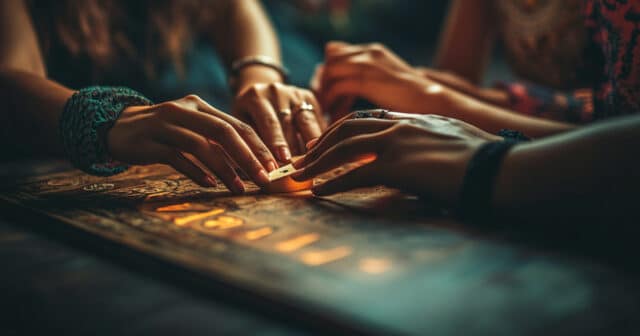

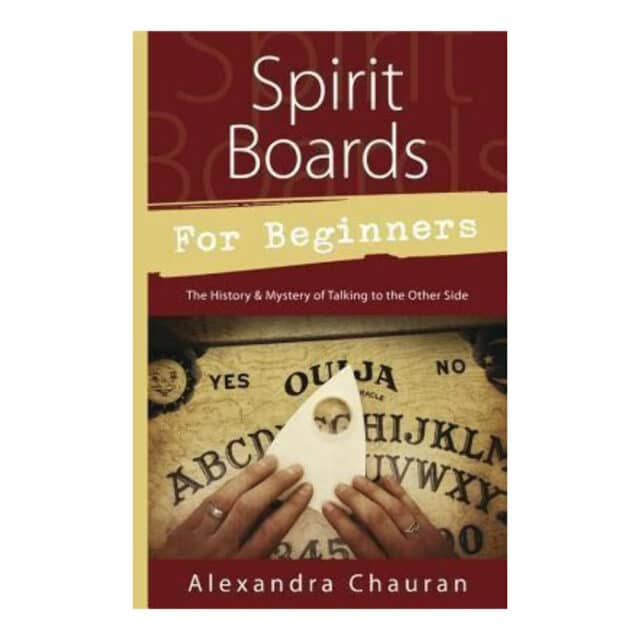
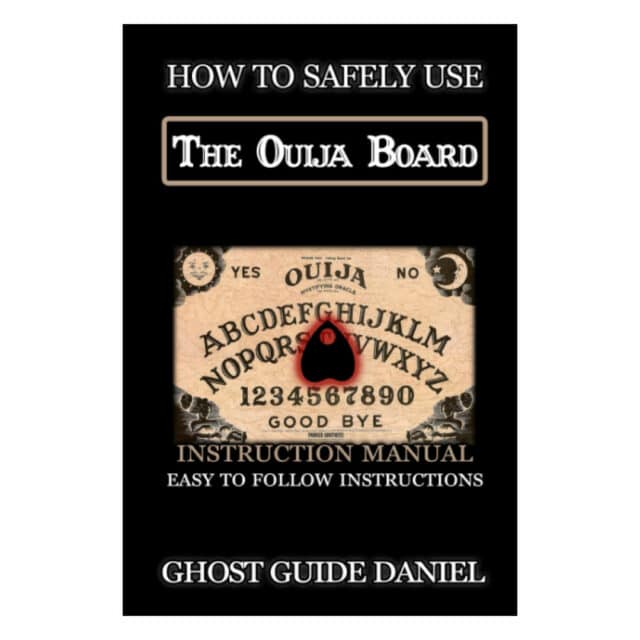
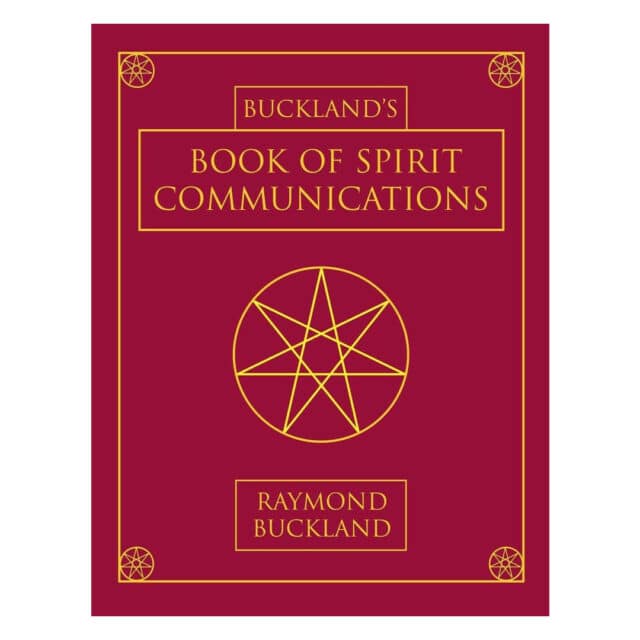
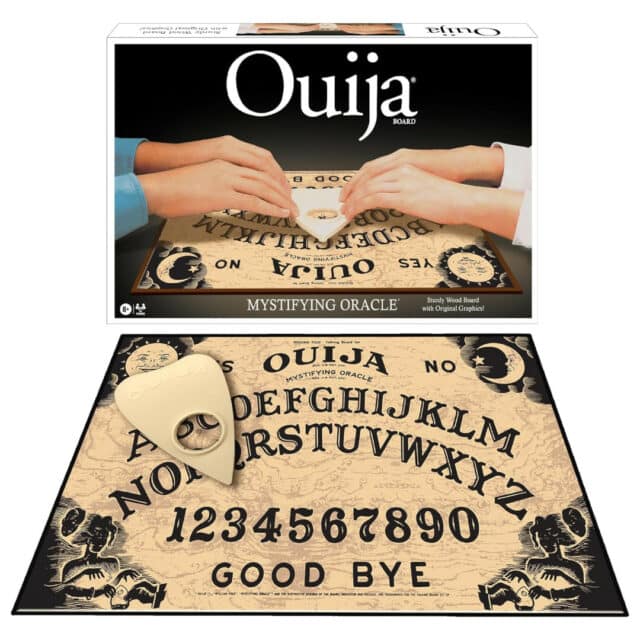
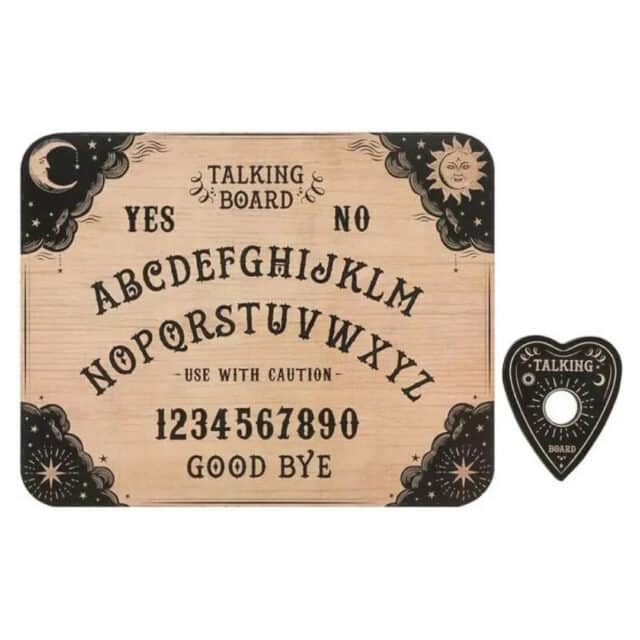
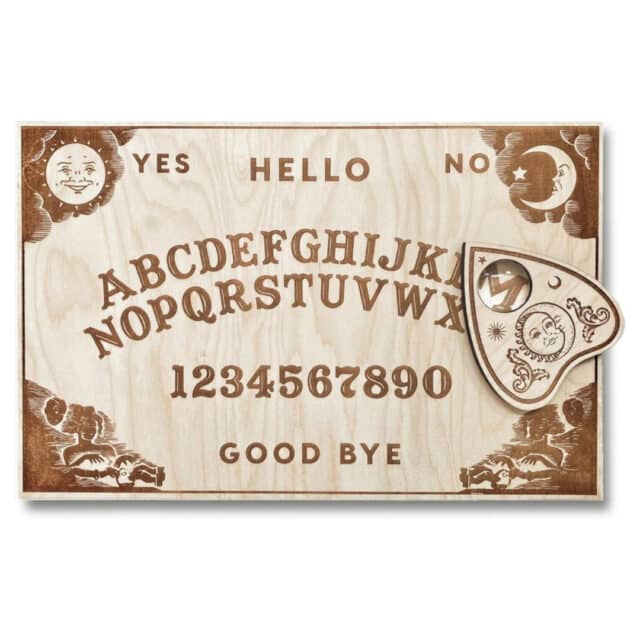

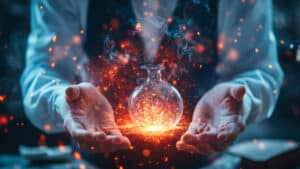

3 Responses
TO THOSE WHO KNOW THE TRUTH THE FORCE IS REAL AS THE OPPOSITE POLES OF A BAR MAGNET NORTH PARALLELED TO SOUTH, AND THE FORCES CORESPOND WITH THE AURA OF OUR BODIES AND THE FIVE PHASES OF MATTER? AIR FIRE WATER SOLID SPIRIT! PARALLEL TO THESE ARE THE FIVE FORMS OF ENERGY, CHEMICAL, ELECTRICAL, KENETIC, THERMAL, NUCLEAR! BUT I M GOING TOO GIVE YOU A FREEBIE DONT TELL NO ONE I TOLD YOU AD LIGHT AND MAGNETISM TOO AND DOCTORS SAY YOU KNOW SOMETHING YOU SHOULDNT KNOW I PRACTICE WHITE MAGIC AND STAND ON MY EIGHT POINT STAR AND HOPE TO GO MY RELM REAL SOON SO I LEAVE YOU AS I CAME IN PEACE?